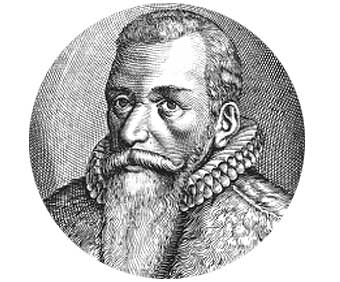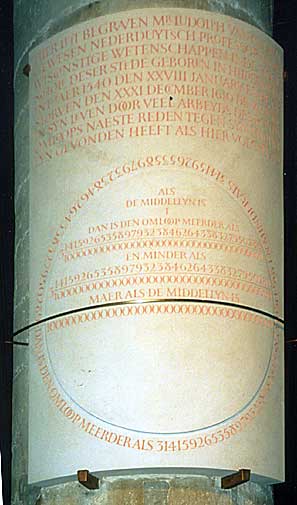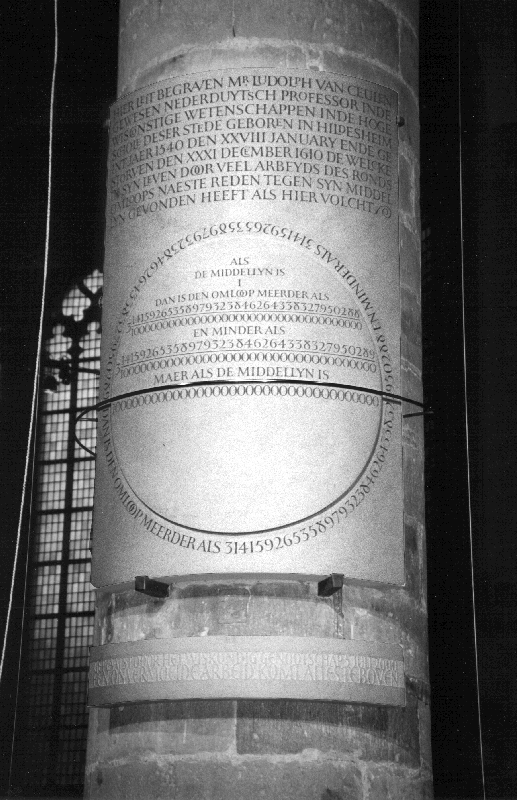Ludolph van Ceulen
Ludolph van Ceulen ( born January 28, 1540 in Hildesheim, † December 31, 1610 in Leiden ) was a fencing master and mathematician.
Life
Ludolph van Ceulen pulled even in childhood to Delft. In 1594 he founded a fencing school in Leiden. Pieter Bailly, a provost at the school, wrote in 1602 a manuscript on the fencing with a rapier for Prince Maurice of Orange, who promoted the school.
1600 van Ceulen was appointed to the School of Engineering of the University of Leiden connected to the first professor of arithmetic, surveying and fortification. The teachers at the school of engineering had a low status at the university, as they often came from practice and, for example, as van Ceulen had no university education. Moreover, they taught in the national language and not in Latin. Van Ceulens works have been translated only after his death by his pupil Willibrord Snell into Latin.
Ludolphsche number
Ludolph van Ceulen is still famous for its accurate to 35 decimal places calculating the wave number, the first progress after the calculation to 16 points by the Persian mathematician Jamshid Mas'ud al- Kashi in the year 1424. Until the 19th century, also referred to as Ludolphsche number. He spent much of his life with these calculations and had engraved the 35 points in his grave stone. The original grave stone has been lost in the 19th century, but on 5 July 2000 a replica of the Peter's Church was erected in Leiden. Van Ceulens students Snell, the translator into Latin and editor of his works, noted in 1621 that this accuracy even with half the computational effort could have been achieved. The mathematical proof then rendered Christiaan Huygens.
Van Ceulens calculations
Archimedes went out in his research to the circle number of regular polygons that inscribed in a circle of radius ( unit circle ) and are described, the so-called exhaustion. The higher the number of vertices of these polygons, the more they approach from inside and outside the circle on. Archimedes began the regular hexagon, sat with the dodecagon continues, then with the 24 -, 48 -, 96 -gon, and so on. Every time the side lengths of a and of the circumscribed pentagon are to be recalculated. Archimedes found using the radiation law and the Pythagorean theorem the following relation between two consecutive side lengths and:
Archimedes has probably used the left recursion formula. By a (simple ) transformation results in the mean recursion formula, which is more favorable for numerical calculations ( extinction ) and comes from more recent times.
Archimedes by the one and circumscribed 96 -gon (ie, n = 6.2.2.2.2 ) won the inequality and from it.
The associated Vielecksumfang differs with growing less and less from the circumference. So is the value of a better and better approximation of Van Ceulen calculated according to this principle to the inscribed 262 -gon ( a polygon with about 4 trillion pages) and thus won over the course of 30 years, the approximate value: 3.141 592 653 589 793 238 462 643 383 279 502 88.










